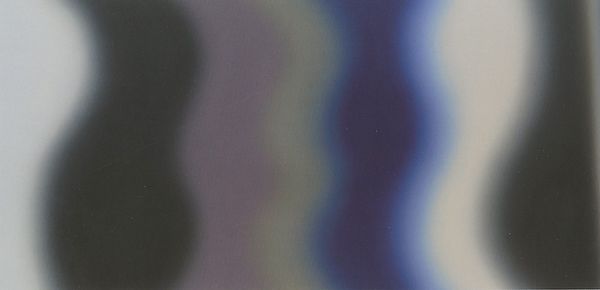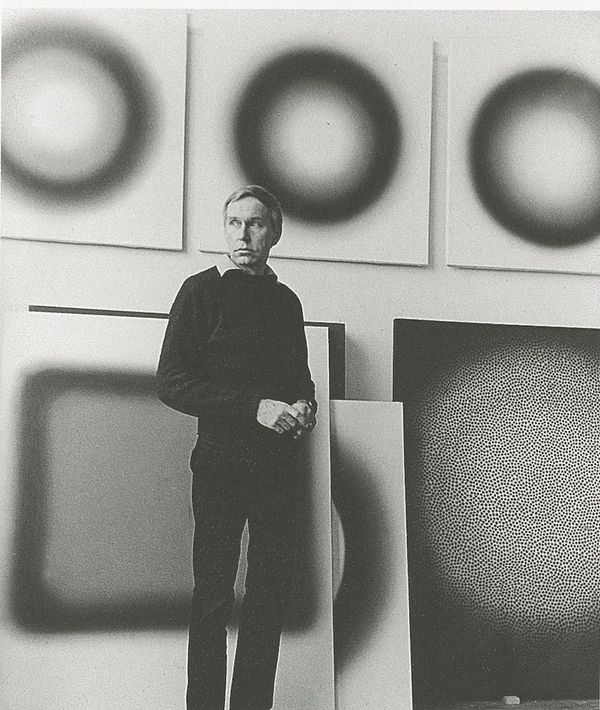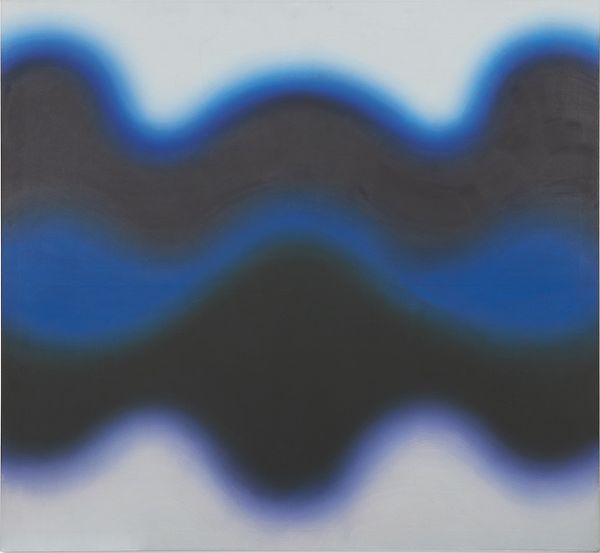Wojciech Fangor, M 91, 1967. Estimate £200,000 - 300,000. 20th Century and Contemporary Art Evening Sale, London.
In M 91, rich hued waves transition softly from blue to indigo to black. Painted by one of the most prolific Polish artists of the 20th Century, the composition exemplifies Wojciech Fangor’s spectacular ability to achieve luminosity and movement through color and space. Created at the dawn of a nearly three-decade long tenure in the United States, the work notably echoes Fangor’s large-scale M 74 at the Solomon R. Guggenheim Museum, which was similarly executed at the artist’s Madison, New Jersey studio. For both works, the titles follow a formulaic logic tracing Fangor’s geographical whereabouts—ultimately relating to their place of execution.
Born in 1922, Fangor studied at Warsaw’s Academy of Fine Arts before embarking on an artistic career that would span more than seventy years. Between 1945 and 1956, Fangor’s output was visually aligned with the hyperrealist style of the Socialist Realists; yet in the mid-1950s, the artist began shifting away from figuration and veering towards theories of color and space. Unaware of the Optical Art and Color Field movements that dominated Europe and the United States at the time, the artist exclaimed, “I did not know that I was an op artist, [the] op movement connected with me” (Wojciech Fangor, quoted in "A Conversation between Hans Ulrich Obrist and Wojciech Fangor," Wojciech Fangor: Color and Space, ed. Magdalena Dabrowski, Milan, 2018, p. 197).

Wojciech Fangor, M 74, 1969, oil on canvas, Solomon R. Guggenheim Museum New York. Image: Reproduced with the permission of The Fangor Estate.
Fangor’s lifelong fascination with astronomy and the cosmos was instrumental in developing his “focus on exploring space as a fundamental aspect of the surrounding world,” as well as his “astronomical observations of planets, cosmic space, and colors” (Magdalena Dabrowski, "Fangor’s Innovations: In Search of New Meaning of Color, Light and Space," Wojciech Fangor: Color and Space, ed. Magdalena Dabrowski, Milan, 2018, p. 15). His rigorous investigation of spatial concepts and color, begun in 1957, was displayed for the first time the following year at Wojciech Fangor A Study of Space, a show organized at Warsaw’s Nowa Kultura Salon. On the occasion of this exhibition, the artist collaborated with Stanisław Zamecznik to present twenty black and white paintings installed on freestanding frames, ultimately producing what he called an environment. As the viewer moved through the environment, they simultaneously became an active participant of the show, their retina perceiving and manipulating the painted forms in turn.
Unlike most post-war color painters, Fangor worked with oil paints on primed canvases as opposed to acrylics. His soft-edged shapes were developed carefully through the application of thinned layers of oil paint with brushes of varying size in order to achieve sfumato. Unlike acrylics that dry rapidly, oil allowed Fangor to work the contrasting fields of color slowly as the shapes transitioned into each other while also allowing the pigment to remain exceptionally saturated. “Circles and waves are useful,” Fangor said to Hans Ulrich Obrist, “because they are deprived of angles and have continuous structure" (Wojciech Fangor, quoted in "A Conversation between Hans Ulrich Obrist and Wojciech Fangor," Wojciech Fangor: Color and Space, ed. Magdalena Dabrowski, Milan, 2018, p. 197).

Wojciech Fangor in Paris, 1964. Image: Courtesy of Magdalena Fangor and reproduced with the permission of The Fangor Estate.
By 1965, Fangor had been included in two group exhibitions at the Museum of Modern Art in New York. The Responsive Eye in 1965, was the first time Fangor’s work was presented in the context of Optical Art and exhibited alongside international artists including Bridget Riley, Carlos Cruz-Diaz, Kenneth Noland, Victor Vasarely, Morris Louis, and Frank Stella. Fangor subsequently immigrated to the United States in 1966, with several offers from universities to teach his spatial theories. Four rigorous years of extensive teaching and exhibiting globally culminated in a solo exhibition of his paintings at the Solomon R. Guggenheim Museum in New York, an honor distinguishing him as one of the best colorists of his time.
Discover More from 20th Century and Contemporary Art Evening Sale, London >

Recommended Reading
Haring, Condo and Basquiat Masterworks to Benefit the Bedari Foundation >
In Conversation with Allen Jones >
